Our Jesus Christ! Lizard
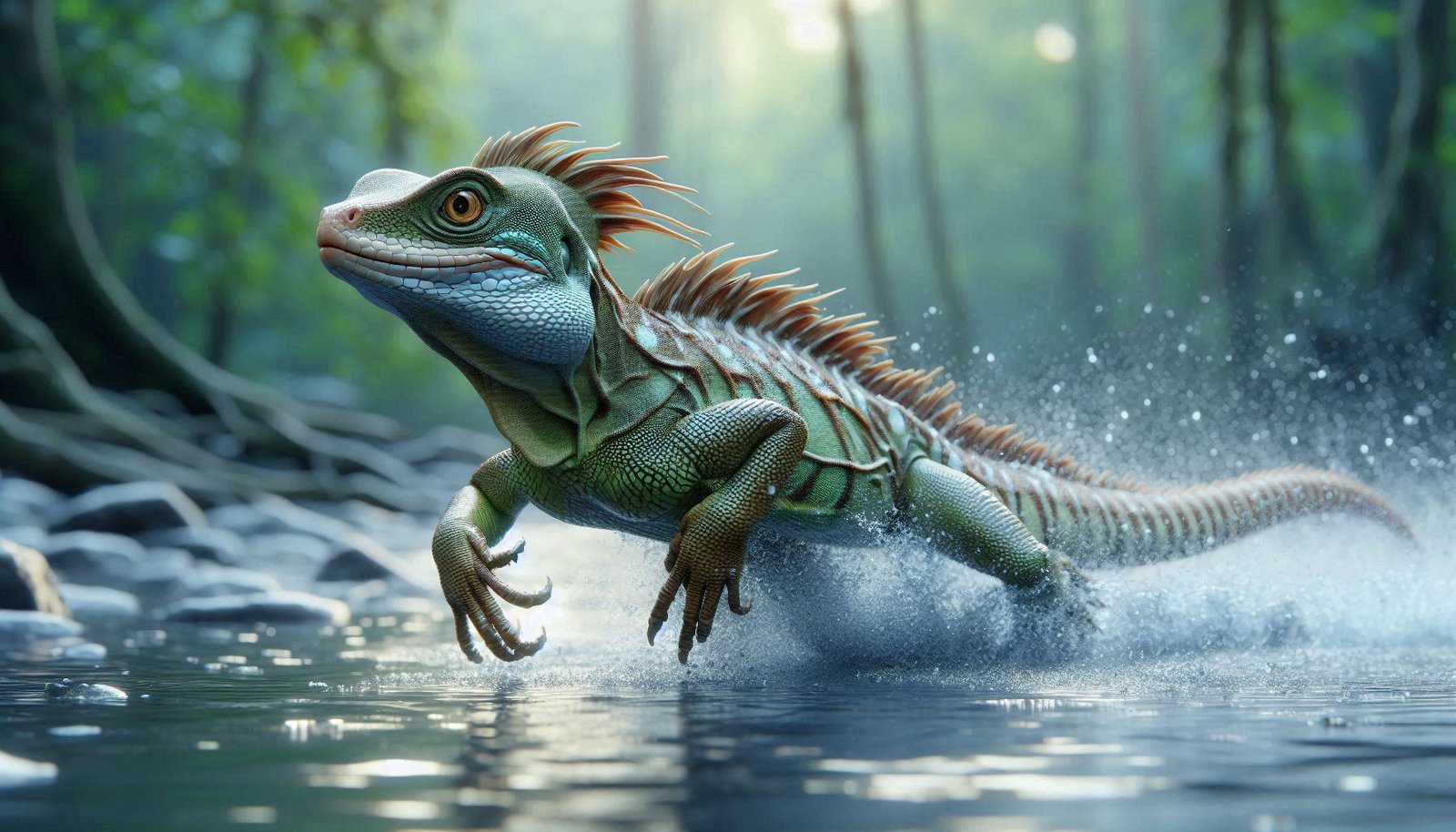
Many know the so-called Jesus Christ Lizard—famous for its ability to run across water. Sharp-eyed visitors to Costa Rica may have seen this spectacle firsthand, pulled off with chaotic grace by one of three native basilisk species. These lizards can grow surprisingly large, making their water-running feats all the more impressive.
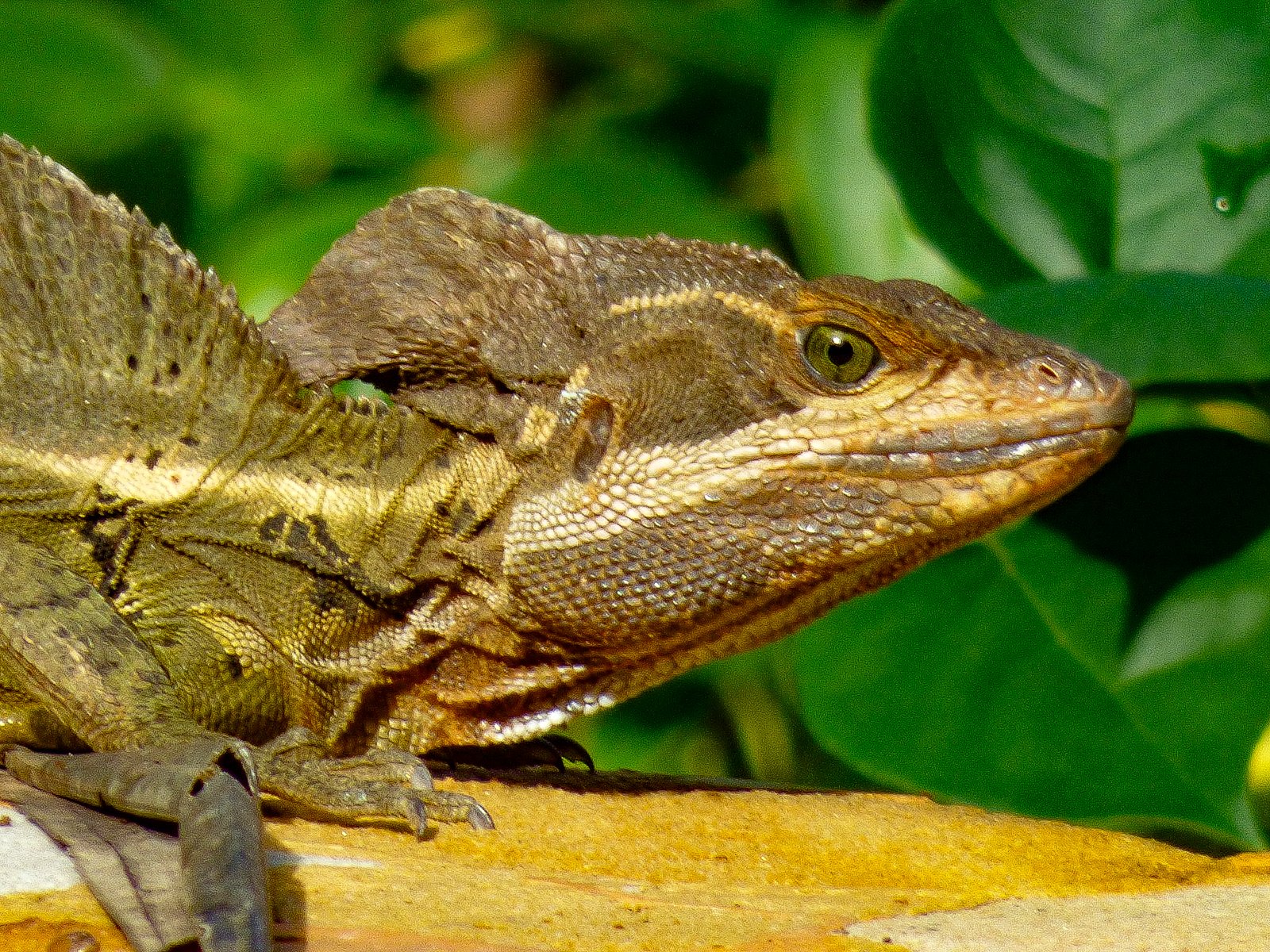
The basilisk runs upright, with its back straight and hind legs slapping the water’s surface while its front legs are tucked up along its sides. The motion is rapid and chaotic—legs blur behind splashes, making it hard to track their movement. This bipedal dash, powered by strong hind limbs and aided by fringed toes that spread on impact, creates air pockets that help keep the lizard momentarily afloat.
HOW CAN THE BASILISKS RUN ON WATER?
Its all About the Feet!
The secret to the basilisk’s water-running lies in its toes—specifically, the long fringes tucked between them. These flaps stay folded during normal movement but splay open when the lizard hits the water, dramatically increasing surface area. This helps trap air and generate resistance, allowing the feet to slap, stroke, and lift in rapid succession—keeping the lizard momentarily afloat.
Speed is everything. As long as the basilisk maintains forward momentum, it can rotate its feet in and out of the water fast enough to stay above the surface. Once that speed drops, gravity wins. At peak performance, a basilisk can dash across water at up to 25 kph (15 mph).
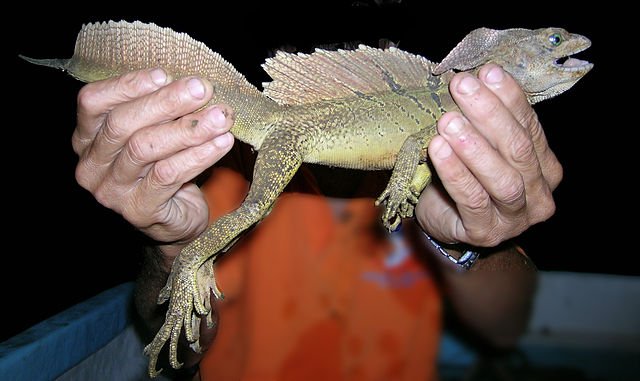
Smaller basilisks can run much farther across water—up to 20 meters or more—thanks to their lighter bodies and reduced drag. Adults, being heavier, typically manage around 5 meters before sinking and switching to swimming. Some may remain underwater for up to an hour, using this time to evade predators or rest.
The Technique
The movement is accomplished in three distinct steps. The first step, called SLAP, is when the lizard moves its leg downward thus slapping water out of the way – this allows the lizard to push itself upwards from the water. The air trapped under its webbed foot provides additional resistance. The second step, STROKE, is the backward movement of the foot which propels the lizard forward. And finally, the RECOVERY is when the foot is pulled out of the water in preparation for a repeat of the cycle. A basilisk may finish a couple of complete repetitions of each step within the span of a single second.
Just Trying to Get Away!
Running on water is primarily a defensive move—a dramatic escape tactic when predators get too close. Another lesser-known adaptation is the basilisk’s ability to burrow into sand. To do this without clogging its airways, the lizard relies on a ring of muscles around its nostrils that seal shut, keeping sand out of its respiratory system.

THREE LOCAL BASILISKS
There are four recognized basilisk species, three of which are found in Costa Rica: the Common Basilisk (Basiliscus basiliscus), the Plumed or Green Basilisk (Basiliscus plumifrons), and the Brown or Striped Basilisk (Basiliscus vittatus). The fourth, the Western or Red-Headed Basilisk (Basiliscus galeritus), is native only to Colombia and Ecuador. Their range extends from southern Mexico through Central America and into the northern Amazon basin. In Costa Rica, they’re frequently spotted basking near swimming pools, parking lots, and perched on tree branches—often in surprisingly urban or semi-urban settings.
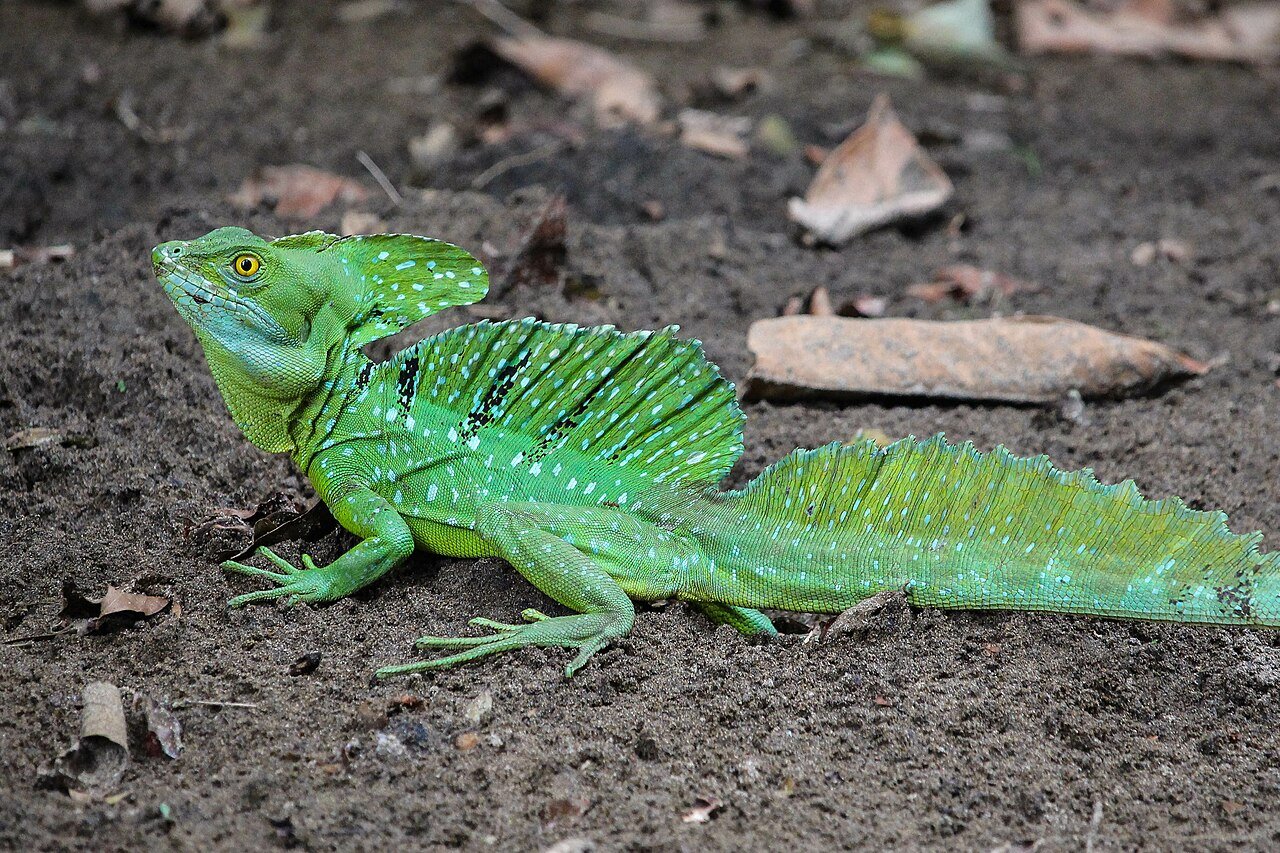
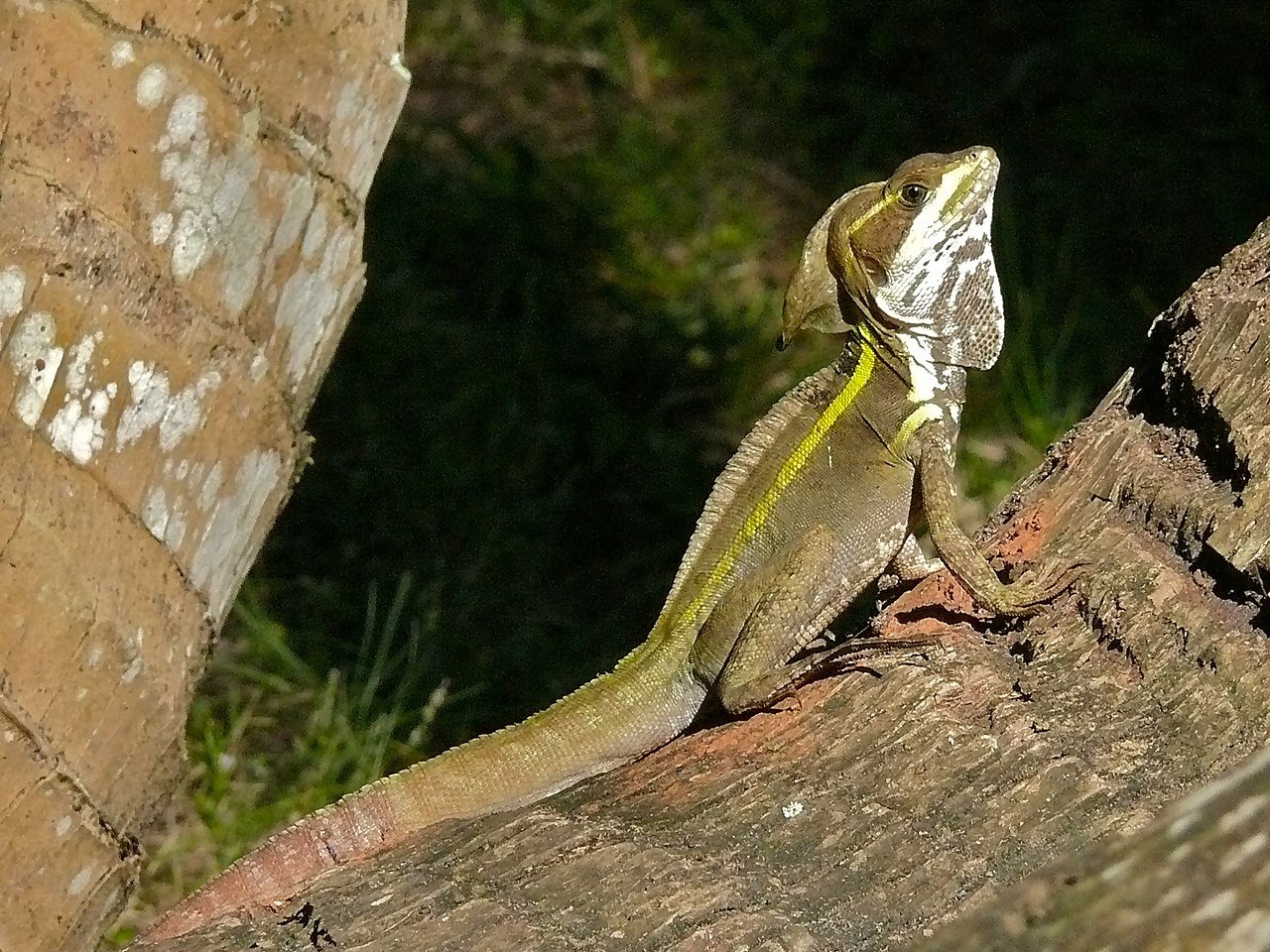
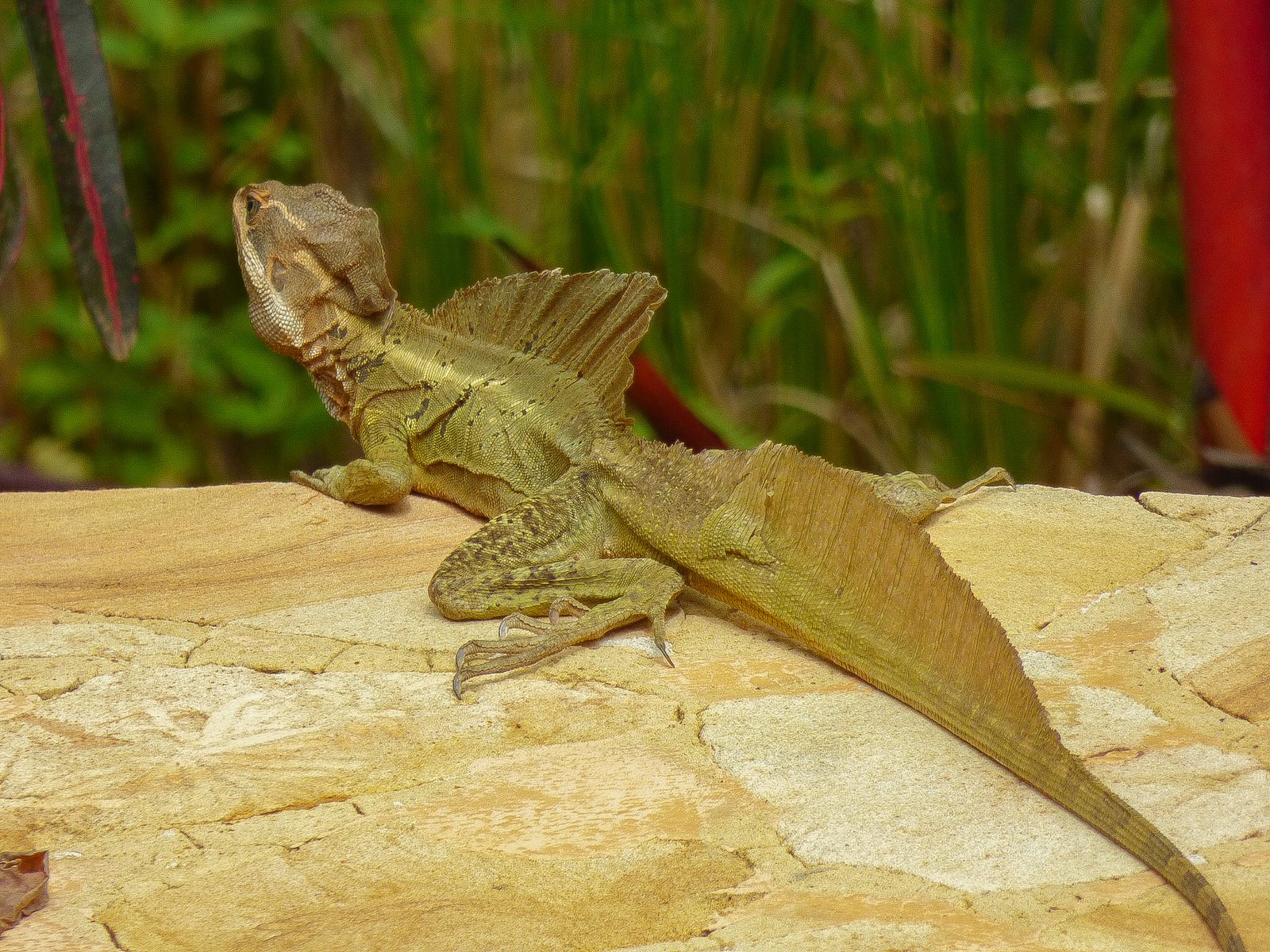
THE ORIGION OF THE NAME
In Greek mythology, the Basilisk was a creature of lethal majesty—feared for its deadly gaze, venomous breath, and power to kill from a distance. Said to hatch from a serpent’s egg incubated by a rooster, it was imagined with the head and legs of a cockerel, the body of a serpent, and sometimes wings like a dragon. Its name, basilískos, meaning “little king,” reflected both its crown-like crest and its mythic dominance.
Today’s basilisk lizards inherit that name with flair. Their striking crests, rooster-like legs, and near-miraculous ability to run across water give them an aura that feels lifted straight from legend. In motion, they blur the line between myth and biology—living echoes of a creature once feared, now admired.

HABITAT AND DIET
Basilisks live near freshwater—rivers, streams, ponds, and lakes—where they hunt during the day and retreat to trees at night for safety. They prefer forested areas from sea level to around 600 meters, though in Costa Rica they’re sometimes found as high as 1,200 meters.
Their diet centers on insects and worms, but they also hunt fish, birds, rodents, snakes, lizards, amphibians, and shrimp. When meat is scarce, they’ll eat fruit, nuts, and seeds, showing a flexible approach to survival.
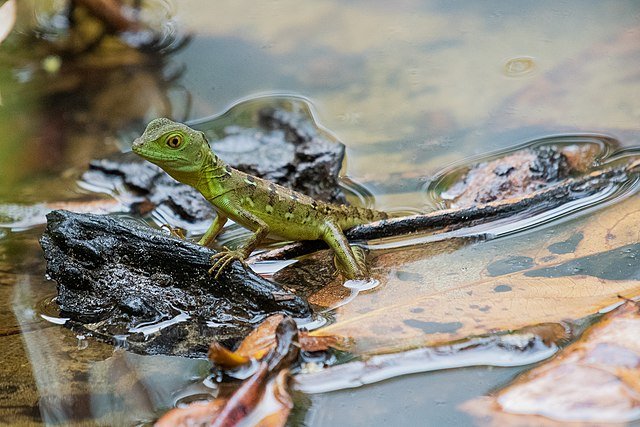
A Green basilisk near its preferred freshwater habitat, where it hunts for food during the day. c/o Adam Jackson wikicommons.
SIZE
Basilisks typically reach about 75 cm (2.5 feet) in total length, including their long tails, though some individuals can grow over a meter. Hatchlings start out tiny—just 4 cm (1.5 inches)—but grow rapidly in their early months. Growth continues throughout their lives, though it slows significantly with age.
WHERE TO SEE THE BASILISK?
Any area near fresh water can host basilisks—I’ve seen them sprint across a pond near the south end of Playa Ventanas, watched one patrol a swimming pool, and spotted smaller ones darting over jungle river pools. Walk along the edge of a stream or pond and you’ll likely startle one into a water-running escape. Just remember, larger creatures also favor these habitats, especially near the coast. The moment passes fast—so skip the camera and soak in the spectacle.

Exotic animals at your doorsteps – who here hasn’t seen a Jesus Christ Lizard run across their swimming pool, stopped their car so a Sloth could safely (and s-l-o-w-l-y) cross the road, or watched a Toucan help itself to their orchard fruit? if this is your idea of paradise, why aren’t you here yet? RE/MAX WE SELL PARADISE is your trusted partner in the beautiful, tropical, exotic COSTA RICA – start by exploring our listings database here.



